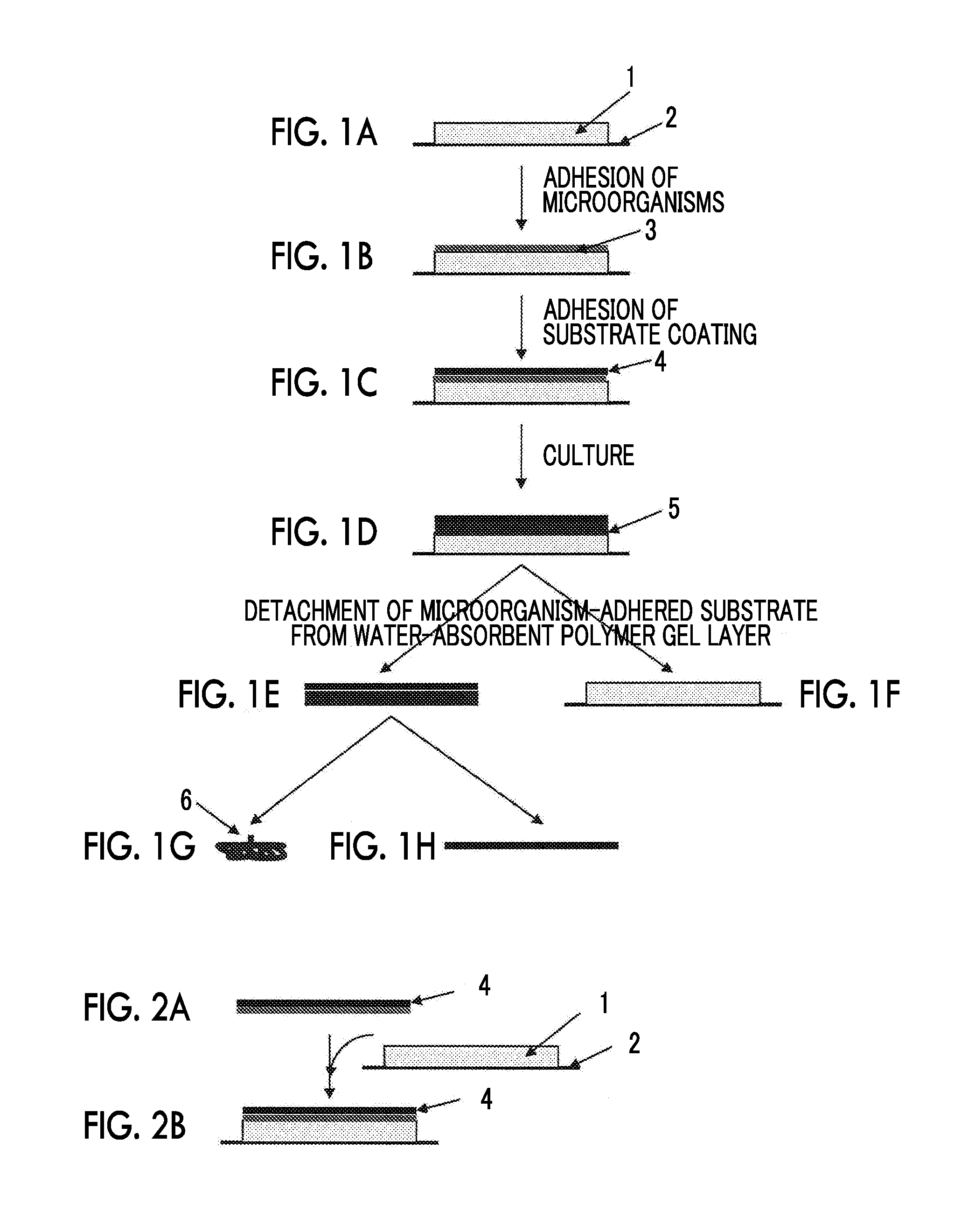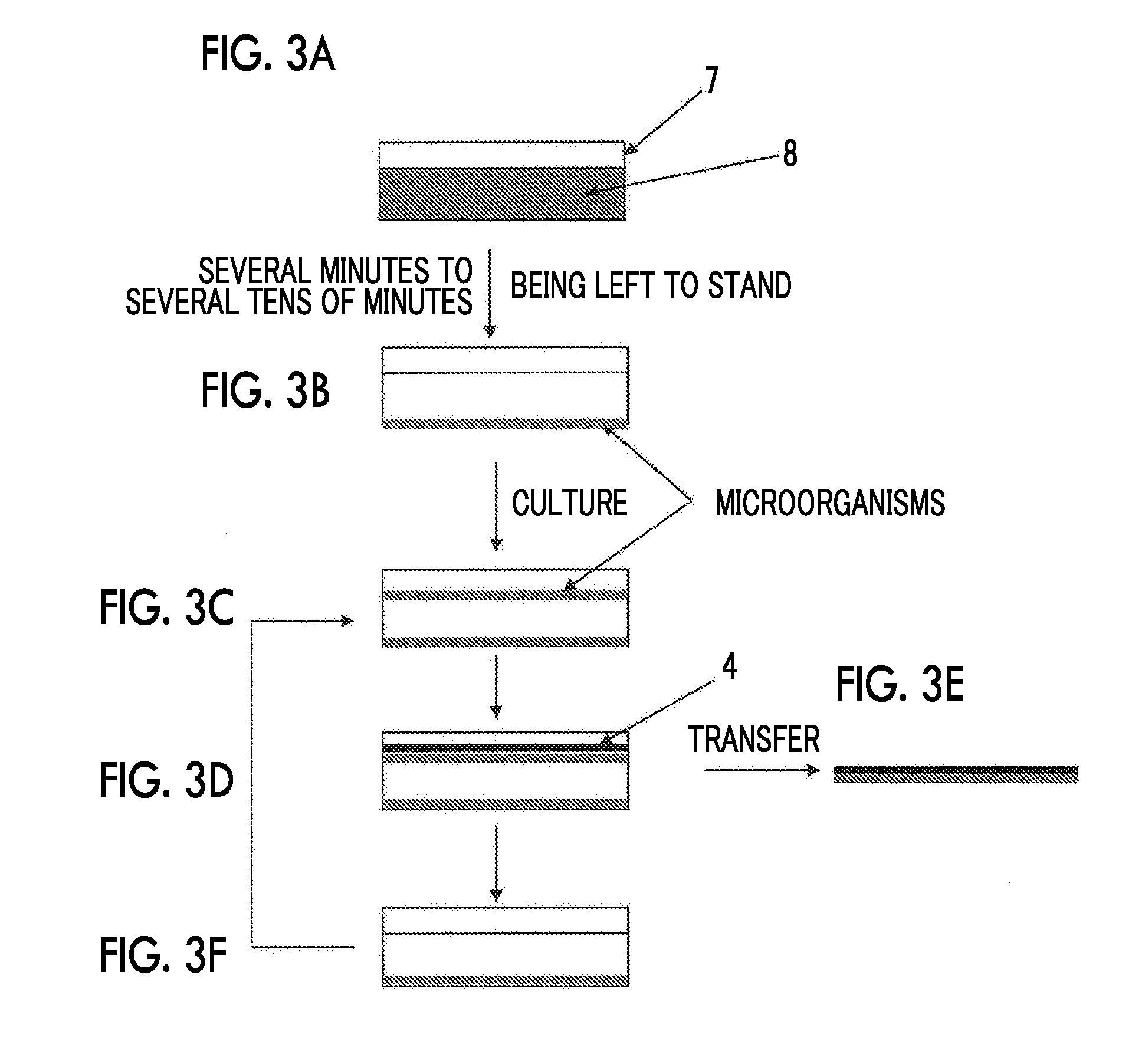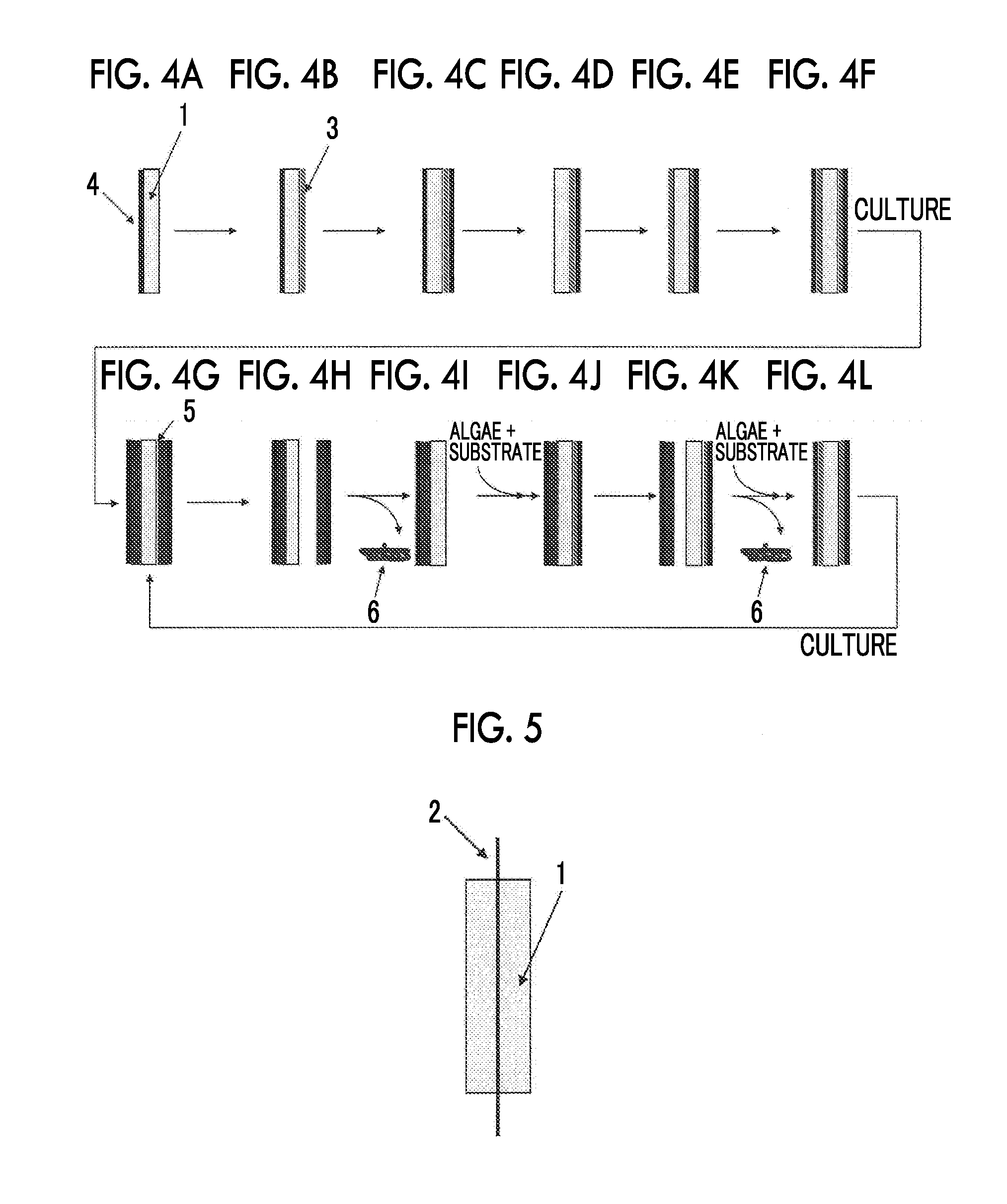Novel method for adherent culture in region formed between water-absorbent polymer gel and substrate, method for manufacturing biomass, and novel microalga
a technology of water-absorbent polymer gel and adherent culture, which is applied in the field of new adherent culture in the region formed between water-absorbent polymer gel and substrate, method for manufacturing biomass, and novel microalga, can solve the problems of large amount of energy input, increased costs, and difficult to collect microorganisms, etc., to achieve easy handling, easy to collect microorganisms, and high intensity
- Summary
- Abstract
- Description
- Claims
- Application Information
AI Technical Summary
Benefits of technology
Problems solved by technology
Method used
Image
Examples
example 1
[0310]AVFF007 strains were cultured for 30 days under the amount of light of 4000 lux in a Purobio Petri dish (2-4727-01, As One Corporation) into which 65 mL of a CSiFF03 medium (FIG. 6) was put, a film-like structure on the liquid surface was collected through a deposition method using a nylon film, the collected film-like structure was put into a 5 mL tube for homogenizing ((TM-655S, Tomy Seiko Co., Ltd.) and was set in a beads cell disrupter (MS-100, Tomy Seiko Co., Ltd.: without using beads), and homogenization treatment lasting for 20 seconds was performed three times at 4200 rpm to obtain a suspension liquid a of AVFF007 strains.
[0311]This solution was diluted, the turbidity was calculated by measuring the absorbance at 660 nm, and the number of algal bodies of the above-described suspension liquid a was calculated from a relational expression between the turbidity and the number of algal bodies which have been calculated above. The number of algal bodies was 2.63×108 cells / m...
example 2
Reuse of Agar Medium
[0328]This Example is about a case in which agarose gel which has been used once is used and it is verified whether or not it is possible to reuse agarose gel by adding a small amount of nutrients to the agarose gel which has been used once and performing second primary culture.
[0329]A suspension liquid a (corresponding to the suspension liquid a in Example 1) was obtained through the same method as that in Example 1. In addition, a suspension liquid b (corresponding to the suspension liquid b in Example 1) was obtained through the same method as that in Example 1. However, the number of algal bodies was set to 5.91×108 cells / mL. Therefore, 186 μL of the above-described suspension liquid a was collected in order to prepare a solution at 10×104 cells / mL, and 1100 mL of the suspension liquid b was obtained.
[0330]Water surface-floating culture was performed through the same method as that in Example 1 using Azunol Petri dishes. However, 18 Petri dishes were prepared...
example 3
Reuse of Substrate
[0344]This Example is Example for verifying whether or not it is possible to reuse a substrate, or whether or not it is possible to use algal bodies remaining on the substrate in a small quantity at the time of reuse.
[0345]A suspension liquid a was obtained through the same method as that in Example 1. A suspension liquid b was obtained through the same method as that in Example 1. However, the number of algal bodies was set to 1.16×108 cells / mL. Therefore, 268 μL of the above-described suspension liquid a was collected in order to prepare a solution at 10×104 cells / mL, and 3100 mL of the suspension liquid b was obtained.
[0346]Water surface-floating culture was performed through the same method as that in Example 1 using Azunol Petri dishes. However, 36 Petri dishes were prepared.
[0347]A film to which seed algae a were adhered was prepared through the same method as that in Example 1. However, a silicone rubber sheet was used as the type of film for a culture perio...
PUM
| Property | Measurement | Unit |
|---|---|---|
| size | aaaaa | aaaaa |
| temperature | aaaaa | aaaaa |
| temperature | aaaaa | aaaaa |
Abstract
Description
Claims
Application Information
 Login to View More
Login to View More - R&D
- Intellectual Property
- Life Sciences
- Materials
- Tech Scout
- Unparalleled Data Quality
- Higher Quality Content
- 60% Fewer Hallucinations
Browse by: Latest US Patents, China's latest patents, Technical Efficacy Thesaurus, Application Domain, Technology Topic, Popular Technical Reports.
© 2025 PatSnap. All rights reserved.Legal|Privacy policy|Modern Slavery Act Transparency Statement|Sitemap|About US| Contact US: help@patsnap.com



